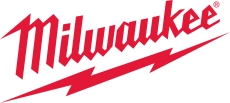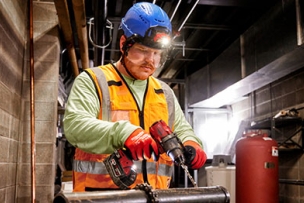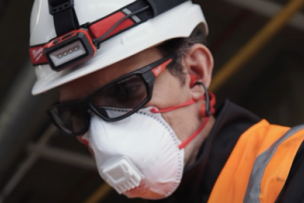Since the company began in 1924, Milwaukee Tool has led the industry in developing innovative solutions that deliver increased productivity and unmatched durability. Whether it is through our world-leading M12™ and M18™ cordless systems, the ground-breaking performance of our M12 and M18 FUEL™ products, jobsite lighting, time-saving accessories, or innovative hand tool and storage products, we are dedicated to delivering a continuous flow of advanced, trade-specific solutions. We invest the time to work side by side with real users to understand the demands of a constantly changing workplace and how we can best deliver solutions for a safer, more productive jobsite. Through a thorough evaluation of the job at hand – the frustrations, needs, and previous limitations – we set out to completely rethink a solution and deliver the game-changing innovation seen across all our product lines. Milwaukee Tool is not simply a manufacturer – we are progressive problem solvers.
The importance of torquing electrical connections is not a new concept. In fact, research has shown that up to 90% of electrical failures occur at connections. As such a critical part of the process, it’s not surprising that the National Electrical Code (2017) states that “listed and labeled equipment shall be installed and used in accordance with any instructions included in the listing and labeling” in installation standard 110.3(B).
A new addition in 2017 provides further clarification in regard to torquing by requiring “where a tightening torque is indicated as a numeric value on equipment or in installation instructions provided by the manufacturer, a calibrated torque tool shall be used to achieve the indicated torque value, unless the equipment manufacturer has provided installation instructions for an alternative method of achieving the required torque.” (NEC 2017 110.14(D)).
The Importance of Properly-Applied Torque
Electricians have a responsibility to install conductors and make connections according to the manufacturers’ instructions.
Unfortunately, it’s commonplace for many electricians to tighten connections one of three common ways: (1) With a torque tool that may not be calibrated properly, (2) Using an impact and then a torque wrench, (3) Manually applying torque with a crescent wrench and using the torque wrench to get to the torque value. These professionals may believe they know how to accurately tighten connections this way because everything has traditionally worked fine once the equipment is energized. Unfortunately, what they rarely see is what happens years down the road when these connections start to fail:
Over-Tightened Connections
-
Potential to yield a fastener or put too much pressure on the wire, resulting in hot flash.
-
Could cause the fastener to break, cut the wire, and damage the connection.
- Over time, the connection could begin to overheat and fail.
Loose Connections
-
Over time, the connection could experience thermal runaway. This could result in high temperatures, leading to equipment damage and, in some cases, structural fires.
-
Can result in loss of energy – a problem for building owners who want to cut costs.
- When the conductors aren’t making good contact this can create arcing, sparking, and overheating – resulting in fire.
The Traditional Tools – and Their Shortcomings
Unfortunately, to make proper connections in accordance with the NEC, electricians have had to resort to a lengthy, multi-tool process. This process involves:
- Taking a hand tool or impact to run down the fastener
- Holding the fastener in place with pliers
- Following up with a torque wrench to ensure precise torque
- Recording the read-out via paper or similar spreadsheet (which often includes manually changing in-lbs to ft-lbs)
Additionally, some electricians are often asked to wait for an inspector prior to making these connections so that the documentation is ensured to be accurate – potentially postponing the installation by days or even weeks.
This entire process can ultimately halt productivity to a standstill.
To read this White Paper in its entirety and learn about Milwaukee's solution to the multi-step, multi-tool connection process, click here.


.jpg?itok=cW0aWSZH)




